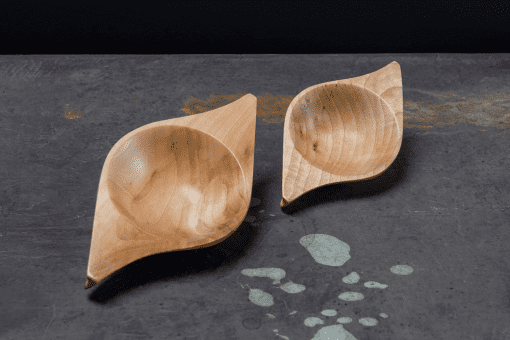Welcome to “Walking Woods Edinburgh”, a self-guided audio tour around the centre of Edinburgh that takes a closer look at the history of the city through the eyes of a wood scientist. The tour was developed as part of the 20th annual meeting of the Northern European Network for Wood Science and Engineering (WSE), but it is meant to be interesting for wood scientists and laypeople alike.
Go to the route map and list of stops
Download transcript of the episode.
Here are few impressions of the workshop and furniture Jon and others make:



Jon and I spoke about the different “waste” materials the wood workshop uses to make their furniture. In case you can still not imagine what a church pew looks like, here’s an example (picture credit: Acabashi, Wikimedia Commons)

Even though there is a lot of good wood in pews and many other items, when they come to the end of their life they are not commonly being reused or remanufactured. Instead, the wood is usually chipped and most of it is burned, but some of it is made into chipboard or MDF. We were involved in a large project on the reuse of structural timber between 2019 and 2022: The InFutUReWood project was one of the first to take an interest in waste wood as a resource, but much has changed since then, and one of the biggest R&D projects in Norway, SIRKtre, is currently working on reuse options for timber. For us at Edinburgh Napier, the most interesting challenge is the strength grading of recovered wood, because approaches that we use for new timber might not be safe to use, and new visual and machine grading options need to be developed. In the linked video, Dan also explains some ideas we have that might work for recovered wood (and other unusual resources), and we can’t wait to work on them in future projects!
Jon and I also speak about trees that are considered waste before they even make it into a first use: 86% of our hardwood harvest was burned for energy production in 2023. We are also working on strength grading options for UK hardwoods in the hope that more of this “waste” material could be used for a long time. My PhD involves a lot of testing to find out about hardwood properties and how we can predict them without testing too much material.
But there are other challenges, besides the lack of knowledge on hardwood properties, that need to be overcome if we want to use more hardwood trees for timber production. Within the building from England’s Woodlands project my colleagues have done a market review amongst foresters, hardwood processors and manufacturers of construction products, to find out which barriers hinder hardwood use. Amongst the barriers for getting more wood out of the forest were the accessibility of woodlands (the presence of road and the effort needed to extract trees) and the lack of industry that would take on small parcels of unusual trees. All the better it is to see that some projects do make profitable use of such unusual resources and give them a market!
Next stop: Castle view (grassmarket)
